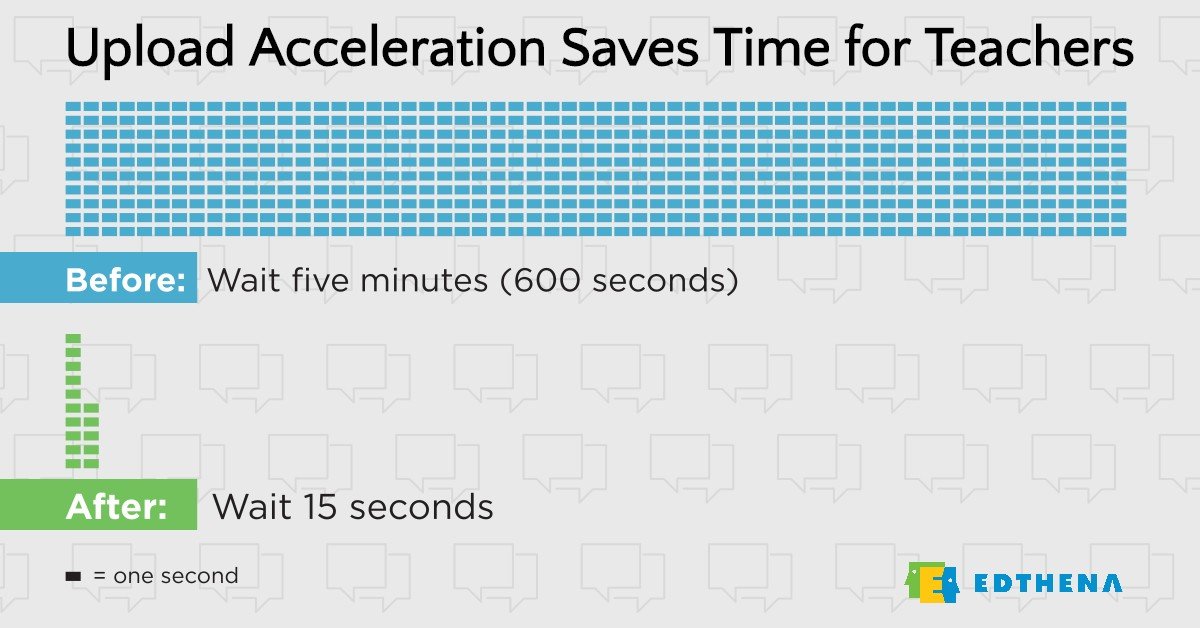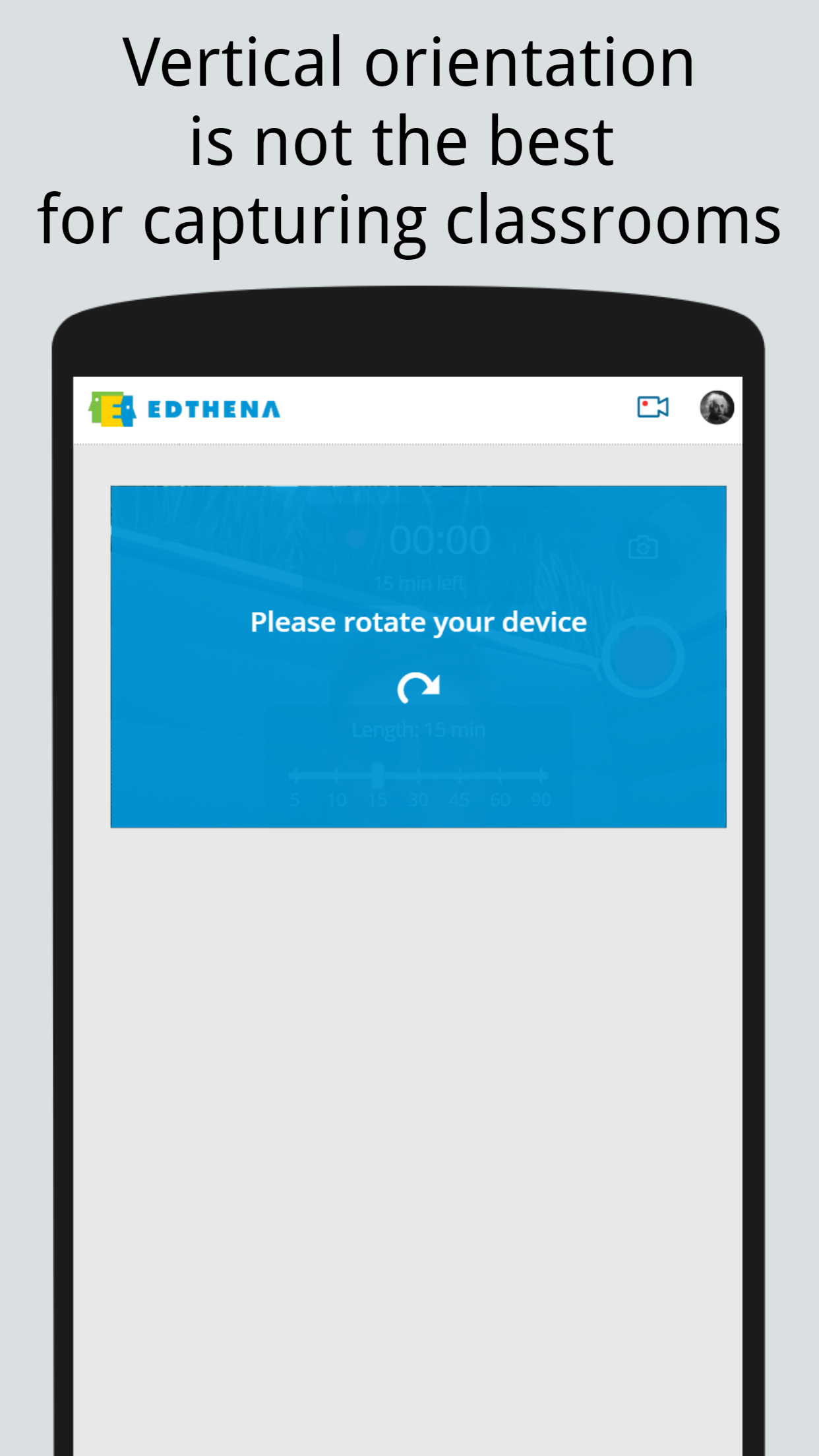Better, Faster, Stronger: New Upload Acceleration Helps You Spend Less Time Recording Higher-Quality Classroom Video for Teacher Professional Development
At Edthena we invest meaningful amounts of time and energy into ensuring the video record and upload experience for all users is reliable, easy, and streamlined. Now we’re going to start saying “and it’s about the fastest you’re going to find anywhere.”
This spring, our users have been enjoying faster and more reliable video uploads thanks to an under-the-hood adjustment to our browser-based video recording tool.
The long and (very) short of it is that a user who used to wait five minutes — a.k.a. 600 seconds — now will wait only about 15 seconds for the upload to finish!

We made your uploads faster without more bandwidth
It takes a lot of engineering investment to ensure that our users get the best experience recording and uploading videos. Reliable video uploads (and the statistics to back it up) are a big benefit of choosing Edthena.
The reason we think this is SO (so so so) important is because, if teachers can’t get their videos online, then the rest of the tools for video professional learning doesn’t matter.
For two years Edthena has offered recording and uploading with one click from your internet browser. This enables users across nearly any internet-connected device to get videos online seamlessly.
There’s nothing to install and no special permissions required from the district tech support team. A teacher simply opens their laptop or mobile device and presses the camera icon inside our website.
Ok, so how did we make this process faster? We implemented a mechanism to save the videos in small, independent chunks as the video is being recorded. This enables us to start uploading the video while the video is still recording.
On the server side, VideoBot now knows how to reassemble these short videos into one longer video and in the correct order.
And all of this is being delivered with a success rate of 99.76% on the first attempt in the past two weeks! This is to say, we haven’t sacrificed anything in terms of reliability.
I think you mentioned higher-quality videos
 In the past two years, the underlying browser technology has improved in its ability to communicate with and receive data from on-device cameras.
In the past two years, the underlying browser technology has improved in its ability to communicate with and receive data from on-device cameras.
We were able to capitalize on this and now can more effectively take advantage of the better quality sensors in higher-quality cameras.
Using new hardware processing techniques, we can sometimes produce a 4x quality increase while keeping the video files manageably small.
To compare this to a photo camera, it’s like needing to print the same 4”x6” photo and having one camera that sends 2 megapixels of data and another that sends 8 megapixels of data. The second camera’s data will produce a crisper, sharper picture when printed.
This rebuilt camera processing logic also enables us to have more backward compatibility with USB webcams (yes, people still use those!).
What does “stronger” have to do with uploading teaching videos?
A new release also comes with a few other nice-to-haves. We call these “all those small details that add up to a lot of difference.” They make users’ lives just a little bit more streamlined and ensure a good experience.
 For example, we can more accurately detect if a mobile device is in the portrait orientation instead of the landscape orientation. Vertical-oriented videos might be good for TikTok and Snapchat. They don’t capture the right information for a video of classroom teaching, though.
For example, we can more accurately detect if a mobile device is in the portrait orientation instead of the landscape orientation. Vertical-oriented videos might be good for TikTok and Snapchat. They don’t capture the right information for a video of classroom teaching, though.
Also we can warn users when the mic is muted. Don’t laugh. It’s happened to the best of us. No one wants to record an awesome example of using of whole-class and choice texts in an ELL classroom only to discover the sound wasn’t on!
Finally, the whole upload process is more resilient. By this we mean how we can recover from the outlier situations when the video fails to upload.
Imagine you have uploaded 50% of your video file and your computer caught on fire. Previously we may not have had enough information on our server to construct a watchable video.
The new method for multi-part uploading treats each individually uploaded video chunk as a standalone item that can be reassembled. So if your computer catches fire, don’t worry (about your video). We will be able to make a watchable video from the limited data sent to our server.
Work it harder, Make it better, Do it faster
Yes, we’re quoting Daft Punk. Because, hey why not? We think “our work is never over.”
We may have written this post with a lighthearted tone, but we think this topic of video upload reliability is incredibly important. If we’re going to promise easy uploads from any device to all our users regardless of technical ability, we have to truly mean it.
Teachers depend on Edthena for their professional learning. We want to make sure to deliver on our promises.
This is why we constantly re-invest in our video technologies.


